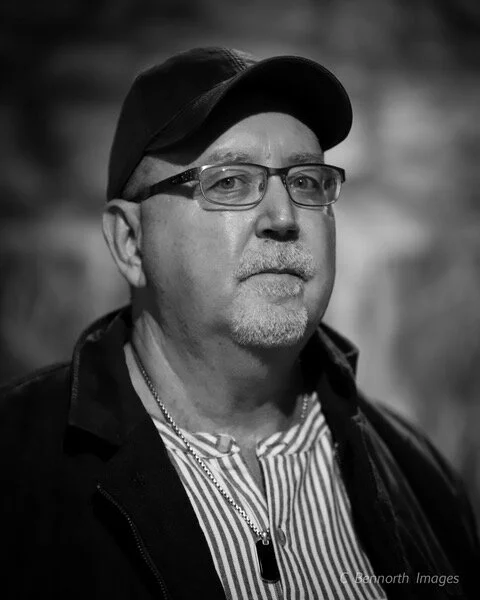Marc Frazier on “After”
One of the strongest influences in my poetry is place. Having been raised in the wide-open space of farm country has shaped and affected my psyche, spirit, and world-view as the prairie affected generations of people. Place is more than geographical location; its metaphorical connections are varied and deep.
My travel to different places sets a flurry of journaling to take place, from which poems are gathered and put in tow. Lately, water has entered my work with a big splash. Somehow, I think the coast frees me of all the strictures of a land-locked life. In “After,” where the place of the poem is contemporary America, I flee to the ocean and its view of sky.
The creation of Art requires more than one self. These selves become one in an aesthetically complete poem, as much by craft as by inspiration. I continually add my observations, my experience, to that which is inherent in the world around me. A poet’s greatest gift is the gift of seeing where a poem lies.
I never visualize my poetry before it appears on the page. However, once the words are there I think of the Michelangelo quote: “Every block of stone has a statue inside it and it is the task of the sculptor to discover it.” I view my block of words as that block of stone and that I need to discover the form of my poem. I consider finding the poem’s form one of the most important aspects of revision and editing.
Usually I feel like I need to “open up” my poems in revision. The first draft is too crowded. I think certain words, lines, and stanzas need breathing space. I can often hear how the poem is meant to sound as I “open it up.” Where it needs to pause, where it needs to stutter, where it needs to hurry. I do mostly depend on the stanza and line form, so I experiment with how many lines per stanza work for the flow of the poem. I often try couplets, even short-lined couplets. If that doesn’t work, I try three- or four-line stanzas. I play around with indenting a pattern of lines, such as indenting the second and fourth lines in each four-line stanza. I also work with extra space between words in individual lines as well. There are also times when a poem needs the freedom to spread its words all over the page. In those cases, I mostly hear how the poem needs to read orally. The sound of a poem is very important; you don’t have to be working with a rhyme scheme for this to be the case.
I once took a speed-reading course that ended up helping immensely with my writing. Since reading is based on eye movements that move across and downward, I keep this in mind when I revise poems. I can control the pace of how the reader reads my poem by how I place words and white space on the page. I can write a poem that reads quickly down the page if I so choose or one that slows down at carefully chosen times or one that has the eye wandering back and forth across the page where words are scattered.
Poems want to have the right form. I have let a poem finally find its innate structure after years of coming back to it. So sometimes it takes a long time, but not usually that long. I spend a significant part of my time in revision and editing with finding the very best structure for my words. With time I recognize when my poem is dressed in the right clothes. I knew early on that “After” would be in prose poem form. Its narrative came to me quite flowingly. It didn’t take long to write, and then, of course, I tweaked it several times. I also had a word list of random, evocative words that I referred to in writing it. This is a strategy I often use when composing a new piece. After writing and reading poetry for years, I have an innate sense of what words work well in a poem.
Three realms inform my poem “After”: the socio-political, the natural world, and my personal self, including my physical self. The word “after” has always obsessed me; I find it to be one of the most evocative words I know. It intimates an entire ocean of possibilities that follow an event or period of time. My poem opens with a reference to a socio-political time in which “new hatreds” arrive. The apocalyptic overtones appear at the beginning of “After” and continue throughout. Later, “a nest of new ideas pulse,” but they come to nothing. In my imagination I feel their vibrations.
A new Age of Reason ensues and I flee, beginning my downward spiral. I turn to non-rational powers such as crystals for protection, yet I feel the possibility of my life ending, my skin parchment. There is a memory of a meaningful relationship in which we shared the natural world and conversations were meaningful, but now I can only see it through a hazy light. Now my world is one of suffering and decay. A thread of semen is not life affirming but part of what may be rough sex with aftershocks of violence.
The final image humanizes the natural world in the form of the fleshy tulips, a key image in the poem. They represent the permanent at a time when I am passing away. I am just a physical being full of blood to be spilled. This is the final apocalyptic vision as it implies that having my blood spilled may soon occur; it is what my journey through this poem has been leading to.
